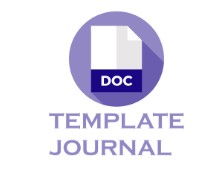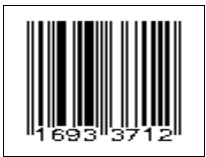Submissions
Submission Preparation Checklist
As part of the submission process, authors are required to check off their submission's compliance with all of the following items, and submissions may be returned to authors that do not adhere to these guidelines.
- Articles will be filed has not been previously published elsewhere, or in consideration of Editor in another Journal
- Files submitted in Microsoft Word format
- Where available, URLs for the references have been provided
- Abstract text written single-spaced; using Times New Roman 12; Font: 10 illustrations, figures, and tables are placed in a table that does not use vertical lines
- Article Writing refer to gaya selingkung follows the style set by the Journal of Fish Scientiae, and can be downloaded through a predefined templateAbstract text written single-spaced; using Times New Roman 12; Font: 10 illustrations, figures, and tables are placed in a table that does not use vertical lines
- If the article is submitted peer reviewers, writers had to make sure that the article has met the requirements specified by Riviewers.
Author Guidelines
Scripts can be written in Bahasa Indonesia or English is good and right. Writing in English is generally in the past tense. The manuscript is written in Microsoft Word with Times Roman font 12. The manuscript is written on a paper size A4 (Margin: Top & Bottom = 2.54 cm; Left and Righ = 3.17 cm), with a spacing of 1.5 (one half) spaces. The length of the manuscript including tables (without vertical lines), Pictures and other illustrations, a minimum of 10 and maximum of 15 pages. The general rule of writing the article is as follows: Margin: Lef-right; 3:17 cm; top-bottom: 2:54 cmParagraph: indents & spacing: BodyText, Times New Roman = 12, Indentation: before-after = 0 cm, special, first line by: 1 cm, spacing, before-after; 0 pt, line spacing; 1.5 lines
Format the text is divided into sessions as follows: Title (in Indonesian and English), Abstract (written in Indonesian and English with a distance of 1 space), name of author without titles accompanied by the Email address, INTRODUCTION, METHODOLOGY (location and time Research, Materials and Methods and Data Analysis), RESULTS AND DISCUSSION (written by order of results later discussion), CONCLUSIONS AND RECOMMENDATIONS (Conclusions and Recommendations), Acknowledgements (if necessary), Bibliography. For manuscripts in Indonesian,
The titles and abstracts written in Indonesian and English. Abstract accompanied by keyword. Figures and Tables are only used to explain things that are not easily explained in the text. Manuscripts that do not meet the criteria of standardized writing will be returned to the author without editing by Mitra Bebestari. Editors can remodel and improve the text without changing the substance.
Scopes of manuscripts that can be issued is: Capture and Capture tools, Technology Aquaculture, Fisheries Product Technology, Water Resource Management, Agribusiness Fisheries, Marine Sciences, Biology Fisheries and Aquatic Ecology. The writings that can be incorporated in the form of a summary of the dissertation, thesis, theses, research reports, scientific papers and book reviews.
TITLE INDONESIAN (BOLD, CENTER, TIMES NEW ROMAN FONT 13, SINGLE SPACE)
English title (italics, center, Times New Roman 13, single spaced)
The author first, second author, writer 3, etc., ... the name of the author is written is complete without an academic degree, religious, customary (center, bold, Times New Roman 10, single spacing, before 0 pt, after 6 pt)
1) Institutions Author and e-mail (Times New Roman 10, single spacing)
2) Agencies author (Times New Roman 10, single spacing)
3) Agencies author (Times New Roman 10, single spacing)
ABSTRACT. Written in English, italic, containing objectives, methods, and research results. Written no more than 350 words.
Keywords: 3-5 keywords (separated semicolon; tap 1 time, 1 spacing 6 pt before after)
ABSTRACT. Written in Indonesian, containing objectives, methods and research results. Written not more than 250 words.
Keywords: 3-5 keywords (separated semicolon; tap 1 time, 1 spacing 6 pt before after)
Corresponding author: e-mail (electronic mail address of the author in order correspondence)
INTRODUCE (Times New Roman, 13 pt, before 20pt, after 20 pt, center, capital letters, bold)
It should contain (in order) the general background, the literature review as the basis of scientific novelty of the script statement, statement of a scientific novelty and research problems. At the end of the preliminary assessment, purposes should be written the text. In a scientific text formatting is not allowed their review of the literature as well as in the research report but manifested in the form of a literature review prior to demonstrating the scientific novelty of the manuscript. The writing format is Times New Roman, 1.5 spacing distance.
METHODS (Times New Roman, 13 pt, 1 spacing, before 20pt, after 20 pt, left aligned, capital letters, bold)
Time and Place (Times New Roman, 13 pt, 1 spacing, before 12pt, after 12 pt, left aligned, italic, bold)
Equipment and Materials (Times New Roman, 13 pt, 1 spacing, before 12pt, after 12 pt, left aligned, italic, bold)
Data Analysis (Times New Roman, 13 pt, 1 spacing, before 12pt, after 12 pt, left aligned, italic, bold)
The research method of exposure in the form paragraphs contains flow (not made numbering), load the Location and Time Research, Materials and Methods and Data Analysis that obviously do researchers, with a length of 10-15% of the total length of the article.
The materials are written here only in the form of the main ingredients only and must be equipped with the brand and purity, for example H2SO4 (Merck, 99%). Equipment that is written in this section only contains major appliances equipped with the brand, for example electric Furnace (Carbolite). The components supporting equipment need not be written. The series should be the main tool in this section is equipped with a caption. Caption placed to be part of the title of the picture is not a part of the image.
The writing format is Times New Roman, 12pt, spacing 1 space, the distance between spacing 6 pt, First line 0.5 cm in one column.
RESULTS AND DISCUSSION (Times New Roman, 13 pt, 1 spacing, before 20pt, after 20 pt, center, capital letters, bold)
Results and discussion contain the results of research findings and scientific discussion. Results and discussion are not done separation. Write down the scientific findings obtained from the results of research that has been done, but must be supported by sufficient data. Scientific findings are referred to here is not the data of the research results. If there is a new discovery, it should be expressly stated in the discussion. Titles tables and figures are written in Indonesian. Units of measurement should follow the existing international system. Long exposure to this part of 40-60% of the length of the article.
These scientific findings should be explained scientifically include: Do the scientific findings obtained? Why did it happen? Why such a variable trend? All these questions must be explained scientifically, not merely descriptive, if necessary supported by the phenomena of adequate scientific basis. Furthermore, it should be explained also in comparison with the results of other researchers about the same topic. The results of the research and findings must be able to answer the research hypotheses in the introduction.
The hope in this discussion the author examines the findings and cross-reference with the study of theoretical and empirical studies. written by systematic, critical analysis, and informative. The use of tables, images etc. only supported clarify the discussion and confined to supporting a truly substantial, eg, tables statistical tests, the results of a model testing etc picture.
The table was written without the use of vertical lines written with font Times New Roman 10 pt, like the example below.

Figure 2. The development of larvae Channa striata Blkr

Figure 2. Relationship sGnRH-a + injection ad and the water levels of IGS
Table 1. Classification of swordfish based meat protein solubility
|
Frakes |
Cucut Lanyam |
Guramia |
Tambakana |
Bandenga |
|
Albumin (%)b |
8,64 |
15,8 |
18,3 |
30,5 |
|
Globulin (%)b |
13,44 |
31,1 |
20,8 |
43,0 |
|
Prolamin (%)b |
3,29 |
4,1 |
1,9 |
2,8 |
|
Glutelin (%)b |
33,70 |
23,4 |
34,7 |
13,7 |
|
Residue not solvent (%)b |
20,93 |
25,5 |
24,3 |
9,9 |
|
Nitrogen non protein total |
30,71 |
- |
- |
- |
Description: a Source: Pujawati (1988); b percent of the total N, has not been corrected by the Non-Protein Nitrogen
Each equation is written left aligned and numbered columns are written in parentheses and placed at the end of the right margin. Equations should be written using Equation Editor in MS Word or Open Office.

CONCLUSIONS AND RECOMMENDATIONS (Times New Roman, 13 pt, 1 spacing, before 20pt, after 20 pt, center, capital letters, bold)
Conclusions (Times New Roman, 13 pt, 1 spacing, before 12pt, after 12 pt, left aligned, italic, bold)
Contains conclusions formed in a single paragraph. Conclusions should be an answer to the research question and expressed in the sentence, not statistics. Conclusion written in whole paragraphs, not point by point.
Conclusions describe the response of a hypothesis or research purposes or scientific findings obtained. Conclusions do not contain looping of results and discussion, but rather to a summary of the findings as expected in purpose or hypothesis. If necessary, at the end of the conclusion can also write things that will be associated with further ideas from the research.
Suggestions (Times New Roman, 13 pt, 1 spacing, before 12pt, after 12 pt, left aligned, italic, bold)
If you need to write down any suggestions or recommendations must be written together in one paragraph of this
Acknowledgments (Times New Roman, 13 pt, 1 spacing, before 20pt, after 20 pt, left aligned, capital letters, bold)
Acknowledgments mainly addressed to research funders or donors. Acknowledgments can also be delivered to the parties that support the implementation of research.
REFERENCES (Times New Roman, 13 pt, 1 spacing, before 20pt, after 20 pt, left aligned, capital letters, bold)
All references are referenced in the manuscript text must be listed in the References section, and vice versa, all that is written in the Bibliography should be referenced in the text. References should contain reference libraries derived from primary sources (scientific journals and amounted to a minimum of 80% of the total bibliography) published 10 (ten) years. Every manuscript contains at least ten (10) bibliographical references and literary sorted alphabetically.
Bibliography written by the writing style American Political Science Association recommended using Mendeley program.
Library of Books
Writing Library in Library Flat follow the rules as follows:
The date after the author's name, ending with a point. The book title in italics, capital letters at the beginning of each word except conjunctions. Place of publication and publisher names separated by coloms (:)
Example:
Boyd, C.E., 1982. Water Quality Management for Pond Fish Culture. Elsevier Scientific Publishing Company. Alabama, USA. 236p.
Dekker, N. 1992. Pancasila as an ideology of the Nation: From Selection Only to only Azas. Malang: The Malang FPIPS Teachers' Training College.
If there are some books which became a source written by the same person and Diter-publishes a in the same year, the data for publication followed by the symbol of a, b, c, and so that the sequence is determined chronologically or alphabetically title of his books.
Example:
Cornet, L. & Weeks, K. 1985a. Career Ladder Plans: Trends and Emerging Issues-1985. Atlanta, GA: Career Ladder Clearinghouse.
Cornet, L. & Weeks, K. 1985b. Planning Career Ladders: Lessons from the States. Atlanta, GA: Career Ladder Clearinghouse.
Contains a library of books that set Article (There are editors)
As written references from the book coupled with the inscription (Ed.) If there is an editor and (Eds.) If more than one editor, in the author's name and year of publication.
Example:
Letheridge, S. & Cannon, C.R. (Eds.). 1980. Bilingual Education: Teaching English as a Second Language. New York: Praeger.
Aminuddin (Ed.). 1990. Development of Qualitative Research in the Field of Language and Literature. Malang: The Malang and YA3 HISKI Commissariat.
Library of Articles in the Book of the Article (There are editors)
Name the author of the article is written in front followed by the year of publication. The title of the article is written without italics. Editor name is written as writing an ordinary name, annotated (Ed.) When only one editor, and (Eds.) When more than one editor. Herd book title in italics, and page numbers mentioned in brackets.
Example:
Hartley, J.T., Harker, J.O. & Walsh, D.A. 1980. Contemporary Issues and New Directions in Adult Development of Learning and Memory. In L.W. Poon (Ed.). Aging in the 1980s: Psychological Issues (pp. 239-252). Washington, D.C. .: American Psychological Association.
Hasan, M.Z. 1990. Characteristics of Qualitative Research. In Aminuddin (Ed.). Development of Qualitative Research in the Field of Language and Literature (pp. 12-25). Malang: The Malang and YA3 HISKI Commissariat.
Library of Articles in Journals
The author's name is written at the front followed by the year and the title of the article written by ordinary printing, and a capital letter at the beginning of each word. The name of the journal is written in italics, and the initial letter of each word in capital letters except conjunctions. The final piece was written journal consecutive years to how what number (in parentheses), and page number of the article.
Example:
Hanafi, A. 1989. Participation in Rural Press and Adoption of Innovation. Forum Research, 1 (1): 33-47.
Library of Articles in the Journal of the CD-ROM
Writing in the same bibliography with references from journal articles in print coupled with the mention of CD-ROMnya in parentheses.
Example:
Krashen, S., Long, M., & Scarcella, R. 1979. Age, Rate and eventual attainment in Second Language Acquisition. TESOL Quarterly, 13: 573-82 (CD-ROM: TESOL Quarterly-Digital, 1997)
Library of Articles in Magazines or Newspapers
The author's name is written at the front, followed by the date, month and year (if any). The title of the article is written with the usual print and capital letters on each of the initial letters of the word except conjunctions. Magazine names lowercase except for the first letter of each word, and italicized. The page number is called at the end.
Example:
Gardner, H. 1981. Do Babies Universal Sing a Song? Psychology Today, p. 70-76.








